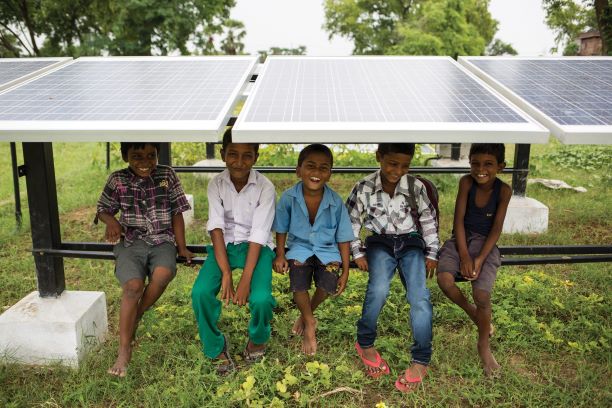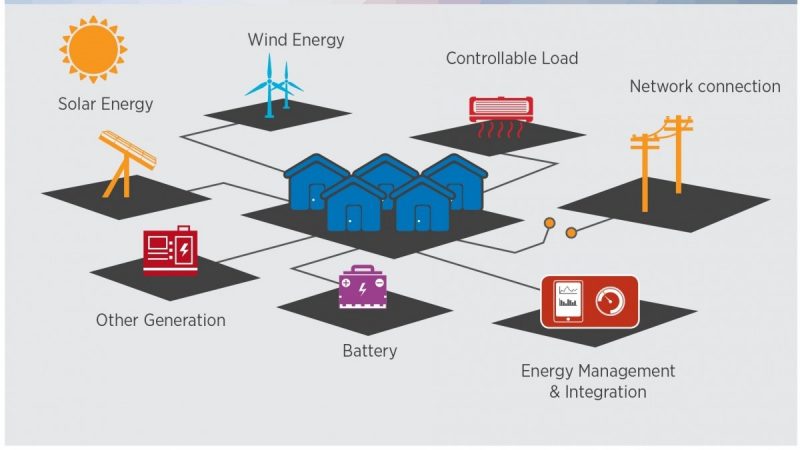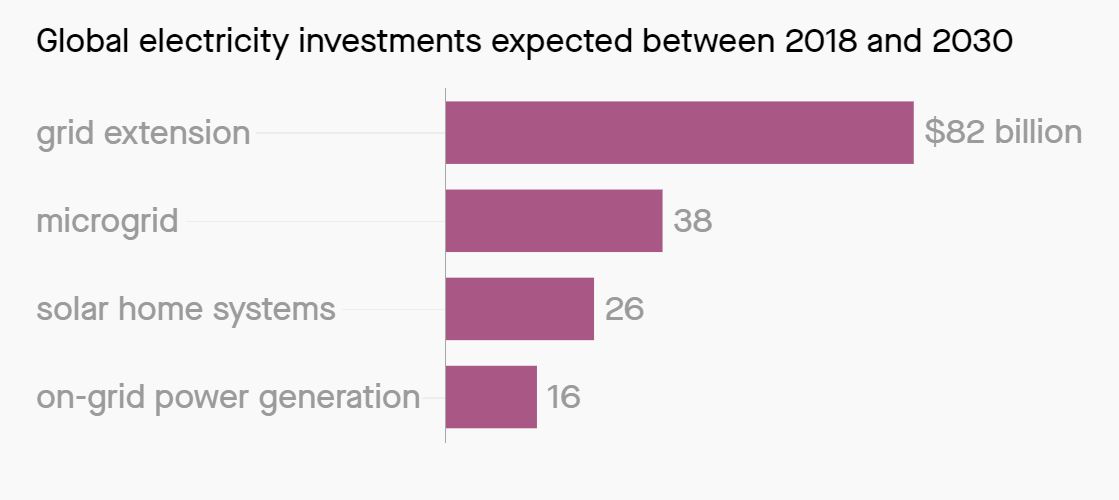Microgrids: Is it the Last Mile Connectivity for Renewables?

An estimated 1.1 billion people – 14% of the global population – did not have access to electricity according to Energy Access Outlook 2017. This however changed in 2018 however over 120 million people worldwide gained access to electricity. This means that for the first time ever, the total number of people without access fell below 1 billion according to new data from World Energy Outlook 2018. Hundreds of millions of people have gained access to modern energy over the last two decades, especially in China and India. Rapid economic development in several developing countries, increasing urbanisation and ongoing energy access programmes like Saubhagya, subsidies for solar and wind energy projects, have been important factors in this achievement.
Despite this feat, Some 1 billion people around the world are still without electricity, who may finally get it without ever needing a central power grid. The solution here lies in Microgrids.

What are Micro Grids?
In its simplest form, a microgrid is a small network of energy users and energy producers (power plants). In today’s power system, the grid radiates out in a hub-and-spoke model. At the center stands a big power plant (usually powered by fossil fuel). On the edges are homes and business consuming power.
In a microgrid, this system is distributed. Power moves between multiple nodes in the network. Supply and demand are balanced locally in real time. Solar power means homes and buildings generate their own energy. Batteries keep surplus supply close to its final destination, reducing the need for hefty transmission lines.
But cost and profitability has been the major block in its growth as against the conventional source of electricity. Many countries even deliver it for less than the cost of generation (without accounting for the high cost of pollution and global warming). Globally, prices range from .06 cents per kWh in Saudi Arabia to 12 cents in the US and 38 cents in Germany.
That’s made microgrids a tough sell. Yet a few things are moving in favor of them. First, infrastructure prices are falling for batteries and distributed solar generation. Secondly, the cost to maintain and expand traditional power grids is ballooning, even as the damages from outages and mishaps keeps growing.
Solutions to Far-flung areas
The island nations like Puerto Rico or Hawaii, which were plagued by expensive yet unreliable power, have made the decision to clean up their electric grids completely. The same can be expected by countries like Indonesia or closer home, the Andamans and Lakshadweep islands. Companies like Siemens claim they can install mini-grid system (mini-grids are essentially larger microgrids covering tens or hundreds of thousands of customers) for just 7% more than a traditional system, while delivering far greater efficiency, reliability, and lower emissions. If we include the price of outages, such as those following Hurricanes like Maria or Fani, the system seems far less expensive.
In India where 1.1 million households are yet to get electricity connections, independent off-grid solutions like the microgrid can open up the market for domestic PV manufacturers, green jobs, skilled force and create a suitable market for Indian made products.
Microgrids can do what mobile phones did to the telecom industry. Instead of going the usual route of landline to pagers to cell phones, much of the developing went straight from landlines or no landlines to 21st-century cellular towers and cheap handsets. Distributed power systems may do the same for electricity.
Amit Pathare, Program director NTU says, “Earlier microgrids were the solutions for the areas where grids did not exist but as we can see the microgrids are a very good test bed for higher level of ingress of renewables which can then be applied to the broader system on whole, where renewables are 20-30% deployed in excess.”

Why Microgrids?
Microgrids can just close the gap that has been persisting for many decades due to administrative or lack of political will. It can compete on the basis of cost as well. BNEF’s Itamar Orlandi estimates, the price of microgrid electricity even beats out centralized grid sources when accounting for the cost of customer hookups anywhere from $266 to $2,100 per connection. The microgrid market is expected to reach $30.9 billion by 2027, according to Navigant Research.
Ultimately, microgrids could bridge the gap between centralized utilities and individual solar installations. Remote towns can build microgrids far faster than a utility will even reach them. Once it does, then microgrids (and individual homes) can be integrated into the centralized system, while retaining their independence during outages.
But experiences in countries such as India show how difficult this can be when things don’t line up. In a study entitled “How Weak Incentives Can Undermine Smart Technology,” researchers at the University of California, Berkeley studied how one of the most promising solar microgrid installers in rural India, Gram Power, stumbled despite doing everything right according to the experts.
Experiences like this have made India rethink its rural electrification strategy to emphasize more private home solar systems to avoid such problems. The lesson from Gram Power is that microgrids are not a silver bullet but like other solutions, it is a MICRO part of the bigger Global Renewable Energy answer.




